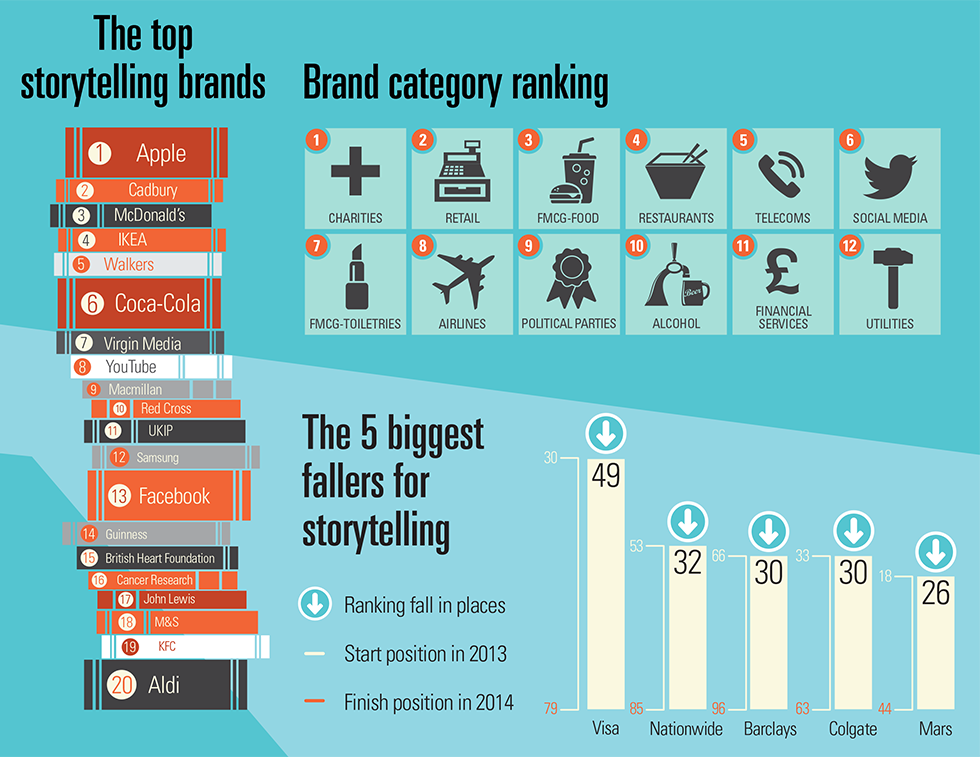In any form of communication, the ability to combine passionate delivery with strategic content and tactical messaging is paramount to successfully delivering a message. One communication technique which is rising considerably in practice is storytelling. This is due to storytelling’s fundamental ability to inspire and elicit action; in captivating an audience to come along for the ride, and be motivated by the narrative throughout the journey.
As Janet Litherland famously spoke:
“Stories have power. They delight, enchant, touch, teach, recall, inspire, motivate, challenge. They help us understand. They imprint a picture on our minds. Want to make a point or raise an issue? Tell a story.”
And storytelling is not only aptly consumed by the devotees of literary masterpieces, it is now widely utilized in business rhetoric because of its keen capability to reach and persuade massive audiences. This is most universally exhibited in the considerable rise of content marketing as a predominant driver of brand awareness, recognition, and even loyalty.
As the “Science of Storytelling” infographic from One Spot below describes, “our brains are built to connect with compelling stories.” One undeniably compelling characteristic of effective storytelling is that it allows our brains to “cut through the noise,” which as “more brands make the move towards content marketing,” is becoming increasingly significant.
Looking at the infographic above, there are definitive ways to increase the power of telling your brands’ stories. These include keeping the message short (with a great title), delivering content that is linear and has a clear narrative, and showing images of compelling content (since the brain processes images approximately 60 times faster than words). Of course, these are just some of the more general, helpful tips to increase the power of your storytelling.
There is no doubt that storytelling has made its way into mainstream business application. In fact, according to Marketing Week, some of the largest and most successful companies in the world utilize a considerable amount of storytelling to deliver compelling brand messages.
It is interesting to note that top storytelling brands (as of 2014) included Apple, Cadbury, McDonald’s, IKEA, Walkers, Coca-Cola, Virgin Media, YouTube, Macmillan, and Red Cross to name the top 10.
In terms of successful storytelling, Marketing Week also noted that the brand categories with the highest storytelling rankings were charities, retail, FMCG-food, restaurants, telecoms, social media, FMCG-toiletries, airlines, political parties, and alcohol to name the top 10. What does this say about the adoption of storytelling as an effective communication for brand messaging? It says that if done well, there is considerable, potential opportunity to utilize storytelling to deliver brand messaging, even in the most competitive industrial landscapes and vast consumers markets that currently exist.
While the development and implementation of effective storytelling might be easier said than done, what are some ways in which any company can successfully utilize storytelling to achieve their strategic goals? There are, of course, numerous ways this can be accomplished, but a singular, very focused method is by fully integrating analytics in your company’s storytelling process.
As Stephen Few puts it:
“Numbers have a great story to tell. They rely on you to give them a voice.”
Integrating analytics into the tactical messaging of your story, combined with the critical success components of strategic content and passionate delivery are not just a recipe for success. They produce the capacity to set your brand messaging apart from your competition’s, the ability to position your brand advantageously to deliver strategic growth opportunities, and to provide the compelling answer to “why” the audience should be moved to action.
Having worked extensively in developing, researching, and implementing the processes which supply the analytics component of successful storytelling, below are 8 helpful tips for using analytics to amplify the power of your storytelling.
8 Ways to Use Analytics to Amplify the Power of Storytelling
1. Become empowered as an effective storyteller utilizing a wide range of analytic capabilities to showcase specific insights. These insights may include the illumination of key trends, data outliers, significant correlations, or even potential problems affecting your business, all which provide the justification for the narrative your story might tell.
2. Utilize analytics to truly bring your story to life with engaging and interactive visual content. This can include the effective use of dynamic infographics and interactive data visualizations to drive home the key messaging of the story being told.
3. Drive both current and potential customers effectively through the purchase funnel by becoming a trusted and reliable source of information, successfully integrating analytics into your storytelling.
4. Directly state, reinforce, and concisely present key facts, research findings, and statistics which form the foundation of your story’s primary purpose (s) and goal (s).
5. Exemplify passion for the subject matter by balancing exhilarating content with advanced analytic acumen.
6. Allow the brand messaging and call to action (s) to become more personal, relevant, and ultimately actionable with specific segmentation, targeting, and positioning analysis. Utilize deep and as high quality data in your analysis as possible, so you can draw out more specific and accurate statistical inferences, meaningful insights, and how you might want to position the brand story more centrally focusing on specific customer or product factors or characteristics.
7. Understand and effectively implement different storytelling strategies utilizing analytics per each marketing medium/ channel on which the story will be told. (i.e. there are numerous different strategies for effective storytelling utilizing analytics on the various different social media channels)
8. Establish a legacy of integrating analytics within your brand’s most detailed and valuable stories to streamline complicated processes, product features, or distinguishing benefits that demonstrate the “why” and “how” your product or service leads to greater customer satisfaction.
Ready to amplify your storytelling with analytics? We’d love to have a discussion about your data and how we can help!









